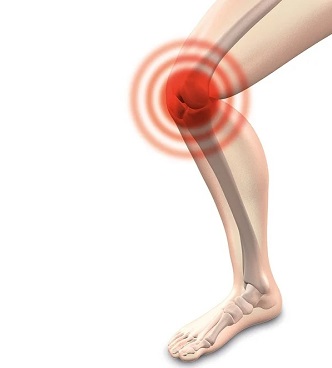Meniscus Tear of the Knee: Causes, Symptoms and Diagnosis
 A knee meniscus tear is a common injury, especially among athletes. However, the condition is not limited to sportspersons alone and anyone can suffer from it. If you suspect a meniscus tear, consult an orthopedic surgeon in Chennai without delay as early treatment results in a faster cure and recovery.
A knee meniscus tear is a common injury, especially among athletes. However, the condition is not limited to sportspersons alone and anyone can suffer from it. If you suspect a meniscus tear, consult an orthopedic surgeon in Chennai without delay as early treatment results in a faster cure and recovery.
Before we start, let us get to know a little about the knee’s anatomy and what the meniscus is.
• The knee joint is the meeting of the shinbone and the thigh bone.
• This meeting point of the bones has cartilage called meniscus to cushion the joint and allow for smooth movement.
• The meniscus is susceptible to damage and that is why meniscus tears are quite common.
Causes of Meniscus Tear:
• Sudden twisting or jerking movement of the knee – this is common with sports like football, badminton, etc.
• Even running and making a sudden turn can cause the meniscus to tear.
• Heavy lifting, squatting and other activities that strain the knees can lead to a meniscus tear.
• As the meniscus becomes weaker with age, these tears become more common.
Symptoms of Meniscus Tear:
A meniscus tear is quite painful and if you experience any of the following symptoms, it is best to get your knee checked by an orthopedic surgeon.
• Pain that intensifies with knee movement like twisting or turning.
• Inflammation in the knee.
• Inability to straighten the leg.
• Knee feels unstable and you feel you might fall.
• Knee feels locked and you feel movement is not possible.
Diagnosis of Meniscus Tear:
• The doctor will conduct a physical examination and check the knee’s range of movement.
• He/she will also ask you how the injury was sustained.
• A meniscus tear will not be visible on an x-ray but an x-ray might be done to rule out other conditions.
• An MRI will be done to confirm the condition.
Meniscus Tear Treatment:
Treatment options vary depending on how severe the tear is and which part of the meniscus has suffered damage. The outer part of the meniscus has a better chance of healing on its own compared to the interior, provided the tear is not large.
Non-Surgical Treatment:
Sometimes, a meniscus tear will not require surgical intervention and will resolve on its own. The doctor might suggest the following to aid healing:
• RICE: Rest the knee, Ice it, keep it wrapped in a Compression bandage and keep it Elevated.
• Painkillers can help relieve pain but should be taken only with the doctor’s knowledge.
• Performing simple exercises to stretch as well as strengthen the knee.
In some cases, these non-surgical treatment options are not sufficient. This happens when the tear is big or if the patient complains of knee locking. For these patients, surgery will be recommended.
Surgical Treatment:
Usually, arthroscopy or keyhole surgery is performed as an outpatient procedure to repair the tear.
• During the procedure, small incisions are made on the knee to insert a tube fitted with a camera. The camera’s output will be seen on a monitor.
• The doctor can see the tear and insert instruments through the same incisions to repair it.
• No hospitalization is required and the success rate of the surgery is high.
- Aug 19, 2021
